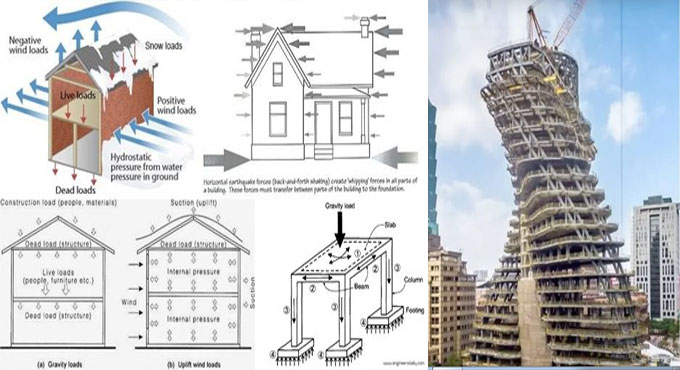
Different types of loads on RCC structures
A collection spiced, crispy & deep fried pakora recipes which are popular Indian snacks or fritters prepared with gram flour (besan).
In this construction video tutorial, you will learn how different types of loads operate on RCC structures as well as types of codes assigned for the loads for designing purpose.
Dead Loads: Dead loads mean the self weight of the structure. These are known as permanent loads which are mostly found in structure.
Dead load is mainly based on the unit weight of the material.
Dead loads comprise of the self weight of the walls, floors, beams, columns etc.
The unit of the materials are extensively utilized in buildings and these are illustrated in IS 875 (part1) ? 1987 code to provide information on strength, specification, difficulties etc.
Live Loads: Live Loads alias imposed loads ? As per IS 875 (part 2) : 1987 code, live loads on floors and roofs comprise of all the loads which operate on the structure temporarily. As for instance, loads of people, furniture, machine etc.
These loads changeable from time to time.
Wind loads: As per IS 875 (part 3) 1987, the force is produced by the horizontal element of wind and it should be taken into consideration in the design of buildings.
It is mainly based on the velocity of wind, shape and size of the building.
Snow loads: As per IS 875 (part 4) : 1987 code, the buildings situated in the regions where the snowfall frequently occurs, should be designed for snow load.
Earthquake loads: As per IS 1893 : 2000 (part 1), earthquake loads are based on the place where the building is situated.
India is segregated in four seismic zones. The code provides recommendations for earthquake proof design of structure.
To get more detail information, go through the following video tutorial.
Video Source: CE&T-Civil Engg & Technology


